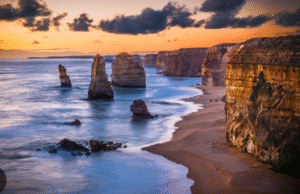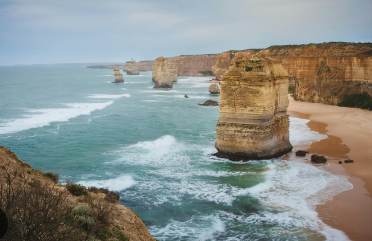The breathtaking capital of Hungary is a city full of beauty, history, and some rather amazing secrets. Budapest never gets old, whether your interests are in its rich cultural legacy or just in appreciating the Danube River’s natural beauty. From historic thermal spas to internationally known celebrations, this city offers everything. These twelve fascinating facts about Budapest will inspire you to want to reserve a hotel there and see it for yourself.
Table of Lists
1. UNESCO World Heritage Sites Galore
Several UNESCO World Heritage Sites located in Budapest help to define the city as among the most beautiful on Earth. Among these are the famous Danube River, Heroes Square, and Buda Castle. The
The Danube, which splits Budapest into two: Buda and Pest, is a focal point of the city. The sights are amazing, whether you’re on a river cruise or wandering along its banks.
2. Pest and Buda’s Unification
Every component, though, has a background of its own. Attila the Hun’s brother, Buda, was the namesake for the city. Pest, meantime, comes from the Latin “Pession,” which described a Roman fortification. One of the most energetic and culturally rich capitals in Europe came from this unity. Should you be planning a vacation, you could choose to reserve a hotel in Budapest to discover all sides of this energetic city.
3. The Biggest System of Thermal Water Caves
Called the “City of Baths,” Budapest boasts the biggest thermal water cave system worldwide. Part of the ancient and natural bath culture of the city, these caverns have developed over millennia. Both residents and guests have long found solace and healing in the warm waters. The geothermal beauties of the city are a must-see, with an amazing network of avenues.
4. Health and Wellness Thermal Baths
Apart from its beauty, Budapest’s renowned thermal baths are supposed to offer medicinal effects. From skin issues to bone and muscle discomfort, the mineral-rich waters of baths like the Széchenyi Medicinal Bath—the biggest medicinal public bath in Europe—are said to assist with conditions. Budapest’s thermal baths provide a special and calming experience, whether your search is for leisure or health advantages.
Dracula and the Dark Legacy of the City
Some of the most well-known vampire myths from throughout the globe have been influenced by Budapest’s spooky vibe. The Fearless Vampire Killers, subsequently turned into a hit musical named Vampire Ball Musical, took place in the city. Over five million individuals have seen this darkly quirky show. Fans of the supernatural will find the city fascinating since its gothic architecture and dark alleyways provide the ideal setting for such sinister stories.
Europe’s Oldest Underground Line
Budapest leads the curve when it comes to public transport. Opening in 1896 to commemorate Hungary’s 1,000th anniversary, its underground system is the oldest underground railway in Europe and among the first worldwide. Still running today, the M1 line—also known as the Yellow Line—offers guests a fast and nostalgic means of seeing the city.
The biggest synagogue in Europe
The second-largest synagogue worldwide and the biggest in Europe, Budapest boasts the Dohány Street Synagogue. With 2,964 seats, this magnificent structure is the focal point for the Jewish population of Hungary. Any trip to the city should include the synagogue since its complex architecture and rich legacy define it.
Drinking Water from Fire Hydrants
Locals in Budapest have a novel and interesting approach to cool off during the scorching summer. Tops on fire hydrants all across the city let both locals and visitors drink straight from them. Especially as the temperatures spike, this odd and enjoyable custom highlights Budapest’s inventiveness and community energy.
The birthplace of the Rubik’s Cube
Twelve Amazing If you have ever battled a Rubik’s Cube, Budapest deserves credit. Designed by Hungarian architect Ernő Rubik in 1974, the Rubik’s Cube has evolved into one of the most well-liked challenges available worldwide. Born in Budapest, Rubik developed the colourful cube as a teaching aid for his students. Little did he know, it would become an international sensation, challenging brains for decades.
The Sziget Festival: An All-Week Musical Celebration
Sziget Festival is one of the most well-known music events Budapest hosts in August among European cities. With top musicians spanning several genres, this week-long event attracts music fans from all around the world. Celebrated on Óbuda Island in the Danube, the festival is among the biggest in Europe and a must-see for everyone who enjoys amazing music and a lively scene.
Budapest’s Changing Population
About twenty percent of Hungarians live in Budapest, did you know? This transforms the city into a vibrant cultural centre in addition to its political and financial centre of the nation. Almost one in five Hungarians call Budapest home, so it allows one to feel the pulse of their country. The vibrant population of the city guarantees interesting events.
A Zoological Rich History
The Budapest Zoo & Botanical Garden is one of the first zoos worldwide. Architectural masterpieces found in the zoo are the Elephant House and the Palm House. Families and animal enthusiasts should visit the zoo since it keeps surprising guests with its vast array of animals, lovely gardens, and interesting past.
Tucked down along the great Danube River, Budapest is a city that seems to be the ideal mix of architectural beauty, romantic appeal, and active culture. From its intriguing past and natural thermal baths to its eccentric ruin pubs and elaborate bridges, Hungary’s capital offers surprises right around.
Budapest once comprised three cities.

But precisely why is this city so magical? These twelve incredible facts about Budapest could just motivate you to schedule that plane ticket.
Buda, Pest, and Óbuda (literally “Old Buda”). Pest sat on the flat eastern bank, where the Parliament and retail areas are today.
Buda and Óbuda were on the western side of the Danube, noted for their hills and castles. Modern Budapest started with the three cities coming together. The contrast between the modern, energetic attitude of Pest and the graceful hills of Buda still seems clear.
Features the Largest Thermal Water
Twelve Amazing Cave System Found in the World. For good reason, Budapest is sometimes referred to as the “City of Spas”. Underneath the city sits a large natural hot spring system. It has more than 120 hot springs to supply the water for some of its well-known spas, including Rudas spas, Gellért, and Széchenyi. Comprising almost 80 kilometres, the thermal cave system under the city is the biggest in the world. So you’re immersing yourself in geology and history rather than merely soaking when you bathe in one of these warm, mineral-rich pools.
Among the World’s Largest Parliaments
Twelve Amazing Buildings: Is This One? By day and under nighttime illumination, the Hungarian Parliament Building is an amazing sight. One of the biggest legislative structures in the world, finished in 1904, it is among the oldest in Europe. It features about 20 kilometres of hallways, 29 stairs, and 691 chambers. Designed in a Gothic Revival style, its symmetrical façade and riverbank setting make it one of the most often photographed sites in Budapest. Inside are the Hungarian Crown Jewels under protection by soldiers standing still with almost military accuracy.
You Still Could Ride a Funicular
Designed in the 1800s. Searching for a picturesque route to Buda Castle, riding the 1870-built Budavári Sikló funicular train is quite exciting. During World War Two, the funicular was damaged, then painstakingly rebuilt and reopened in 1986. Nowadays, climbing Castle Hill is a quick and scenic approach to take in panoramic views of the Danube and Pest. Every vintage cabin provides a bit of nostalgic magic as it climbs diagonally up the hill.
Budapest qualifies as a UNESCO
World Heritage Site. architectural and cultural value. You are walking through a living museum, whether your destination is the royal palace, the magnificent Andrássy Avenue (Budapest’s version of the Champs-Élysées), or the Fisherman’s Bastion viewpoint. ruin bars, from cool to abandonment. When you combine young vitality, urban degradation, and artistic expression, what results? Damage bars. Originally housed in abandoned houses in the Jewish Quarter, these eccentric establishments have grown to be legendary nightlife destinations in the city. Szimpla Kert is the most well-known one; it launched the early 2000s craze.
It boasts one of the oldest European metros.
Imagine mismatched furniture, graffiti walls, art installations, fairy lights, and live music all within a collapsing but lovely environment. Ruin bars are cultural hotspots reflecting Budapest’s creative energy, not only places to drink.
Opening in 1896, the Millennium Underground Railway, sometimes known as route 1 of the Budapest Metro, is the second-oldest underground route in the world, directly behind London. Designed to honour Hungary’s 1,000-year milestone,
it was also the first underground on European territory. It still runs today, it has much of its original appeal with wooden carriages and tiled stations. Riding it feels as though one is travelling through time.
The Danube River splits Budapest.
Europe’s second-longest river, the Danube, divides the steep Buda side from the lowland Pest side directly through Budapest. The two sides present somewhat distinct experiences: peaceful parks and castles in Buda and energetic retail, nightlife, and business districts in Pest. There are nine bridges connecting the two; the most well-known and distinctive is the Chain Bridge (Széchenyi Lánchíd). In 1849, it was also the first permanent bridge linking Buda and Pest.
In essence
Hidden treasure in Europe, Budapest should be on the bucket list of every visitor. Its world-class spas, historical importance, breathtaking architecture, and friendly residents provide a very different experience. These twelve truths hardly cover it; once you set foot in this amazing city, you will uncover many more layers of appeal.
Does Budapest speak English? Indeed, especially in hotels, restaurants, and tourist areas, English is really common. Still, residents value knowing a few simple Hungarian words. What distinguishes Budapest’s Hungarian cuisine?
Rich and substantial Hungarian cuisine is available in Budapest from lángos, chicken paprikash, goulash, and dobos cake. Don’t miss sampling regional taverns’ traditional cuisine or “étterems.”
Could I spend euros in Budapest?
The official Hungarian Forint (HUF) is the currency used in Hungary. Although some tourist areas might take euros, for better exchange rates and convenience, use local money.
The City boasts an active café culture. “the most beautiful café in the world,” New York Café provides elaborate surroundings like chandeliers, gold leaf, and ceiling frescoes. These cafés urge you to stay and daydream whether you’re savouring traditional Hungarian pastries like Dobos Torte or an espresso.
Final thought
All Year Long, You Can Cruise the Danube romantic dinner cruise at night; the vistas are spectacular. Seen from the lake, landmarks such as the Parliament Building, the Fisherman’s Bastion exude a Fairytale Castle Likeness. Fisherman’s Bastion, a Neo-Gothic, Neo-Romanesque terrace perched on Castle Hill close to Matthias Church, seems fit for a Disney film.
Designed in the late 19th century, it was never intended for defence; just for beauty. Some of the best panoramic views of Budapest come from its white castles and sweeping balconies. The term “Fisherman’s Bastion” presumably derives from the mediaeval guild of fishermen defending that length of the city walls.
Conclusion
A City Festivals and Celebrations City of Budapest enjoys festivity. There is always activity from the Budapest Spring Festival and Sziget Music Festival to the enchanted Christmas markets. Celebrating Hungary’s first king, the St. Stephen’s Day fireworks on August 20th are particularly striking, lighting the heavens above the Danube. Time your visit to see the city
Budapest is a destination where history, culture, and modern vitality collide rather than being only a beautiful city. Through its architecture and historical buildings, the city preserves its past while embracing the future with its inventions, art, and active nightlife. The amazing juxtaposition between Buda and Pest offers guests two unique yet equally appealing experiences
FQS
1. When should one travel to Budapest?
Visit Budapest when the weather is beautiful and the crowds are lighter. Winter, though, has appeal with thermal baths and Christmas markets.
2. Does my trip to Budapest call for a visa?
You do not require a visa if you are flying from inside the EU or the Schengen Area. Visa procedures for visitors from outside these borders rely on your nationality of origin. See the Hungarian consulate or embassy for the best advice.
3. Would visiting Budapest be costly?
reasonably priced when compared to other European cities like Paris or London. Though rates could change depending on the tourist season, accommodation, meals, and public transport are reasonably priced.
4. Should I spend how number days in Budapest?
To see the main sights, a three to four-day journey is best; nevertheless, staying longer lets you delve more and day trips to neighbouring towns like Szentendre or Esztergom Twelve Amazing. https://worldinfoes.com/wp-admin/post.



